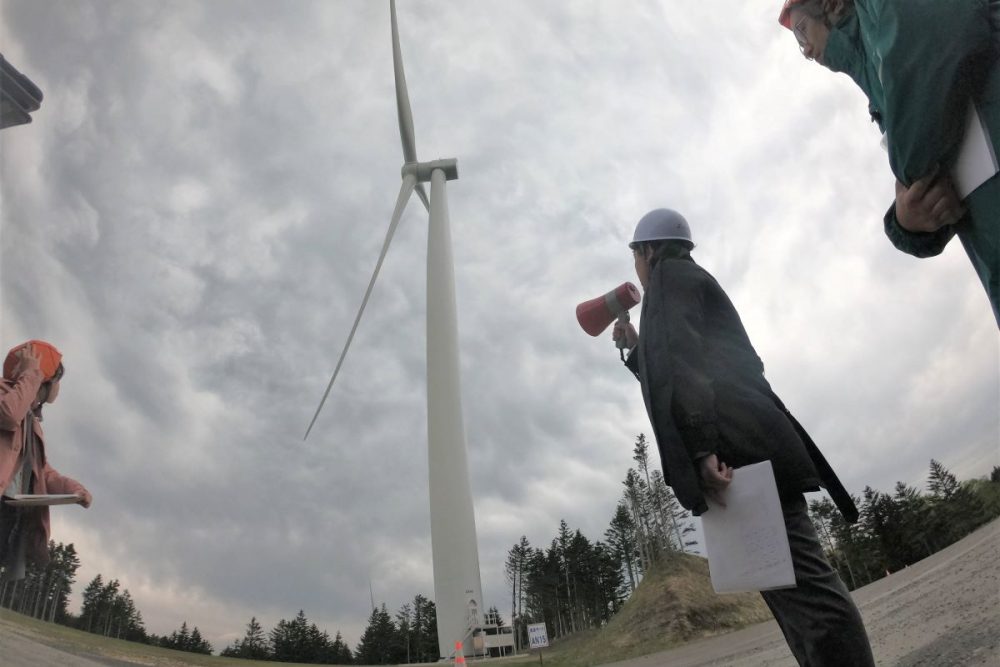INTERVIEW | ‘10 Years That Will Shape the Future’ of Biodiversity with Dr Kazuhiko Takeuchi
“If we don’t change the paradigm of economic development destroying the environment by 2030, it will be too late,” —Dr Kazuhiko Takeuchi.
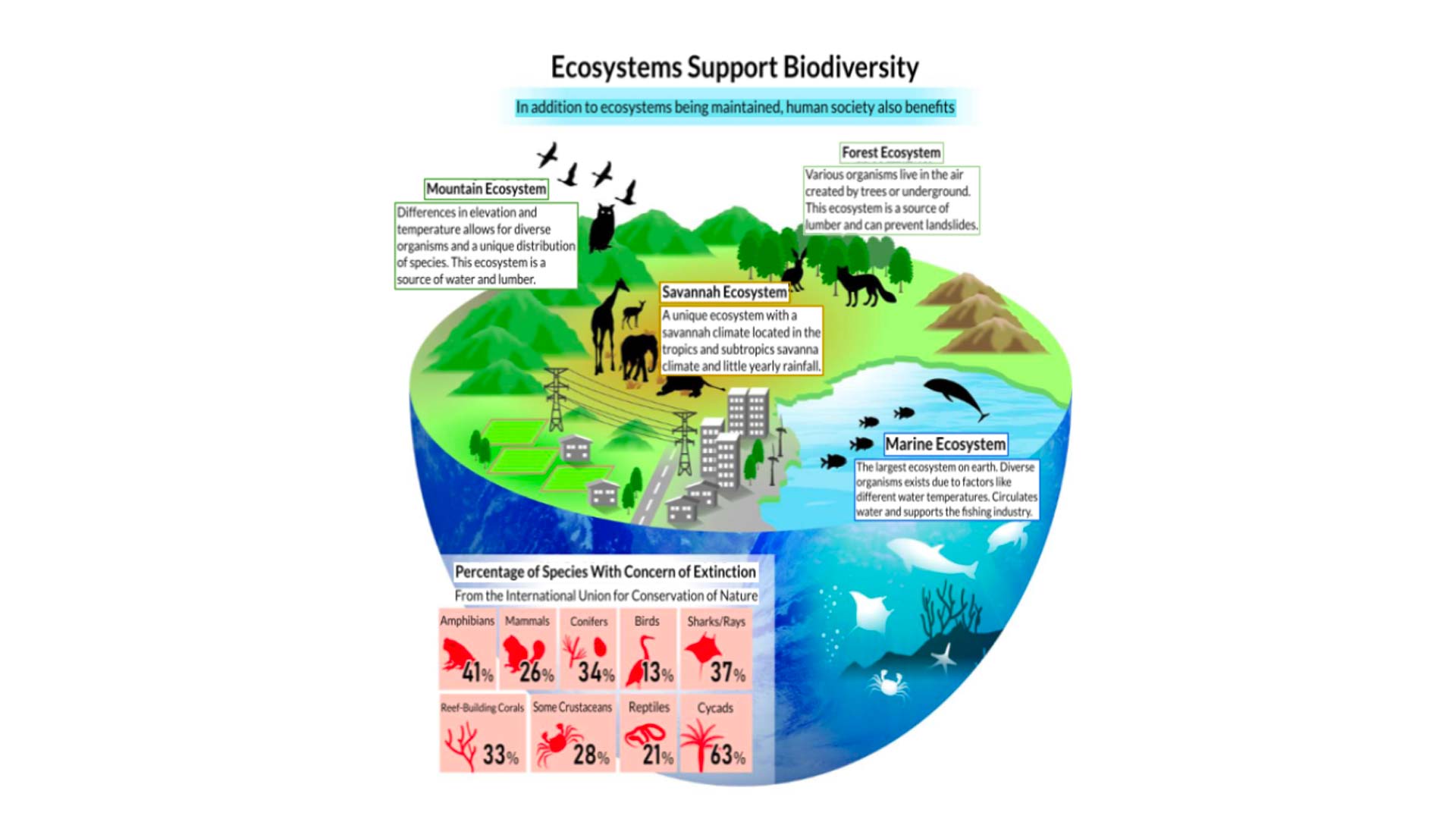
このページを 日本語 で読む
This article was first published on JAPAN Forward on July 7, 2022.
The Conferences of the Parties to the Convention on Biological Diversity of the United Nations will take place later in 2022 to set goals for the conservation of the global environment and rich ecosystems for the next decade. In comparison to the sustainable development goals (SDGs) or climate change, biodiversity may be less well-known, but it is still an important issue.
The Sankei Shimbun asked about the status of these issues in an interview with Kazuhiko Takeuchi, President of the Institute for Global Environmental Strategies (IGES), an expert on biodiversity.
Excerpts follow.
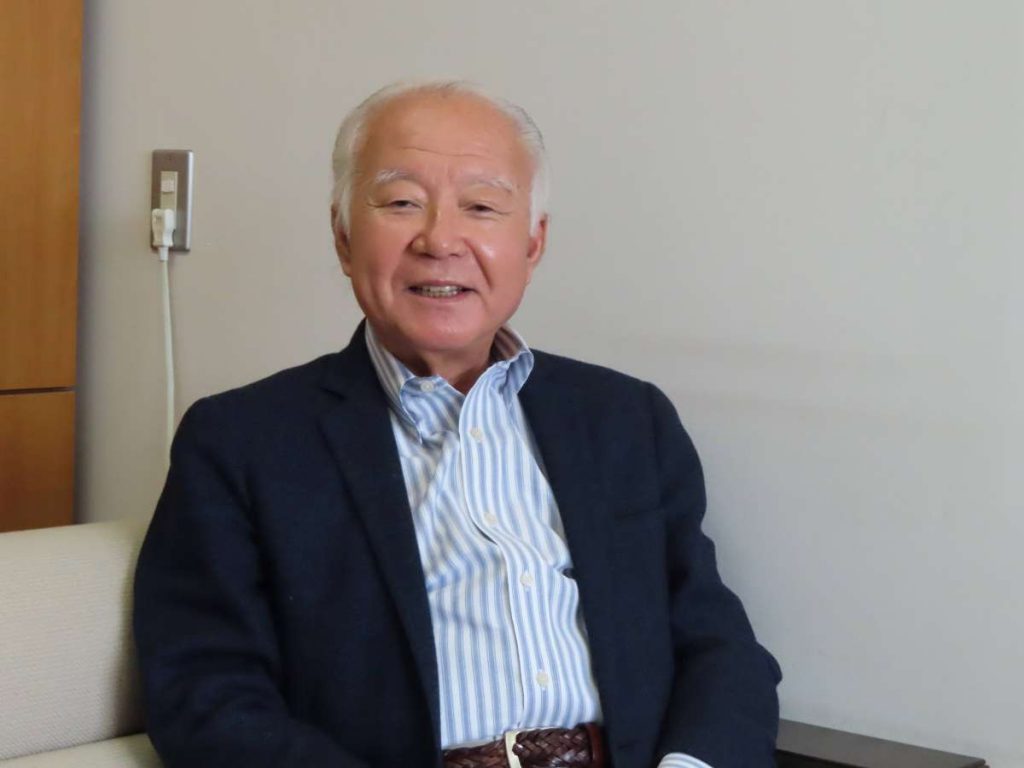
Most Have Never Heard of the Issue
Why is awareness of biodiversity low?
One issue is that the concept isn’t easy to understand right away. I typically imagine diversity in the types of species. It’s difficult to give a clear definition.
Why hasn't understanding of the concept spread?
According to a survey in 2014 by the Cabinet Office [of the Prime Minister], 16.7% of respondents understood the meaning of the word “biodiversity.” In 2019, it was 20.1%. About half had never heard of the term.
However, when the question was changed to, “How much interest do you have in the environment?” 89.1% of respondents in 2014, and 90.6% in 2019, answered that they had an interest.
So it’s not that there was no interest. There was just a lack of understanding of biodiversity. We must work to spread awareness so that there is more knowledge among people.
Does it seem that, compared to global warming, more people ask, “What’s the issue?”
Against global warming, we must reduce carbon dioxide emissions across the board, from throughout the globe to inside our own homes. So, it is easy to understand.
With biodiversity, the ecosystem of the Earth is split into the ecosystem of each region, and each place is different. It’s difficult to understand the importance of the issue because of this.
Repercussions in Time
Why is biodiversity important?
Broadly speaking, I believe there are two reasons. Biodiversity is maintained as the environment evolves, and it changes too.
There is a history of this dynamic of the earth’s living organisms evolving, and it is a problem for humans’ actions to hinder this. In other words, it is a big issue for people to excessively interfere with the laws of nature.
The relationship between natural shifts in the environment and the changes to biodiversity are being destroyed by the expansion of human activities. The way we approach this is a fundamental issue.
And the second reason?
It’s that if we continue like this, there will be repercussions in time.
For example, with a loss of genetic diversity, the materials for improving the breeds of organisms and discovering new drugs will be lost. Neglecting biodiversity means neglecting our lifestyles.
The Biodiversity Convention hasn’t stressed this point that much so far. The focus has been that the irreplaceable decline in biodiversity should be halted. However, this doesn’t permeate society that much and people tend not to see it as a personal issue.
In recent Conferences of the Parties, arguments that this is a near issue have strengthened, and various reports have emphasized this.
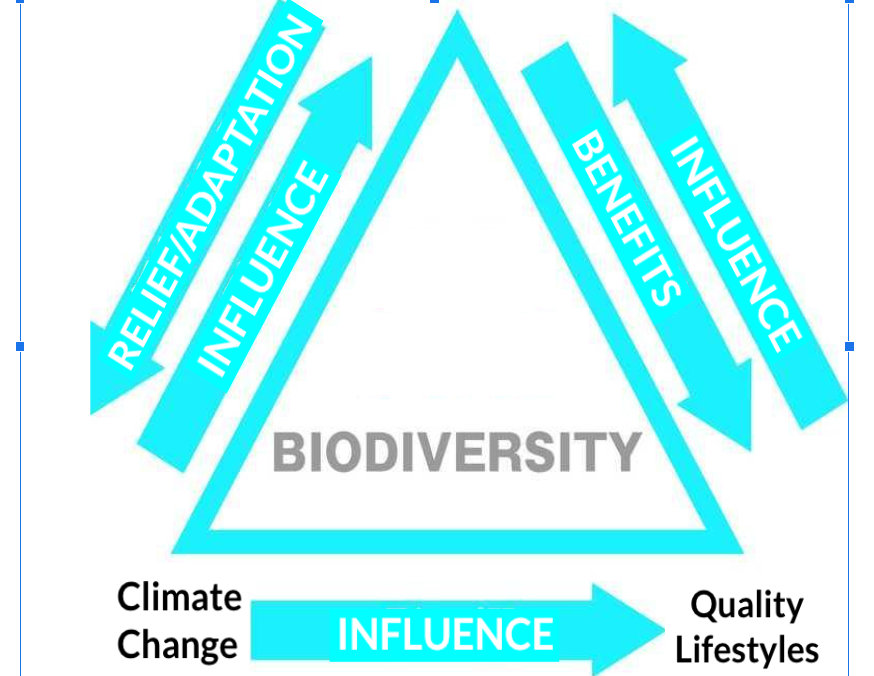
Can human activity and biodiversity coexist?
Agriculture and urban development have fundamentally lacked consideration for biodiversity.
Of course, global warming is one of the major causes, and biodiversity has brought to light the danger of global warming.
For example, due to the warming and acidification of oceans, areas where coral reefs have disappeared are expanding. It is an extremely sensitive ecosystem and has been massively impacted.
How can we address this?
Up to now, global warming experts and biodiversity experts have been separated. They have been distinct as scientific disciplines, in treaties, and in goals.
In recent years, people have begun to question, why are we doing such stupid things? Biodiversity is a topic of discussion in the United Nations Framework Convention on Climate Change’s final summary of climate change. And it is almost certain that when the next goals are set by the Biodiversity Convention, global warming will be stated as a major cause.
The Role of SDGs
Are the SDGs acting as a motivating force?
Environmental relations have been disorganized so far, for example with climate change, land and marine ecosystems, agriculture, and poverty. Under the umbrella of the SDGs, we have begun to approach these issues in a more integrated manner.
These recent developments are a big effect of the SDGs.
Is everything connected, including climate change and biodiversity?
Experts are talking about the present moment as the “10 years that will shape the future.” If we don’t change the paradigm of economic development destroying the environment by 2030, it will be too late.
What can we do about climate change and biodiversity by 2030? We cannot go at our current pace. We are at the crucial moment of preserving the planet for 2050 or 2100. The world’s experts are warning that we have to act now, or the future of humanity will be dire.
What is the state of the Conference of the Parties?
At the 10th Conference of the Parties of the Convention on Biological Diversity, held in Nagoya in 2010, two major goals were adopted. One is the Nagoya Protocol, on the fair and equitable distribution of genetic resources.
The other is the Aichi Biodiversity Targets, which stated goals that should be achieved by 2020. However, most of the targets have not been achieved, and in fact things have gotten worse. This year, we must decide on global goals based on that.
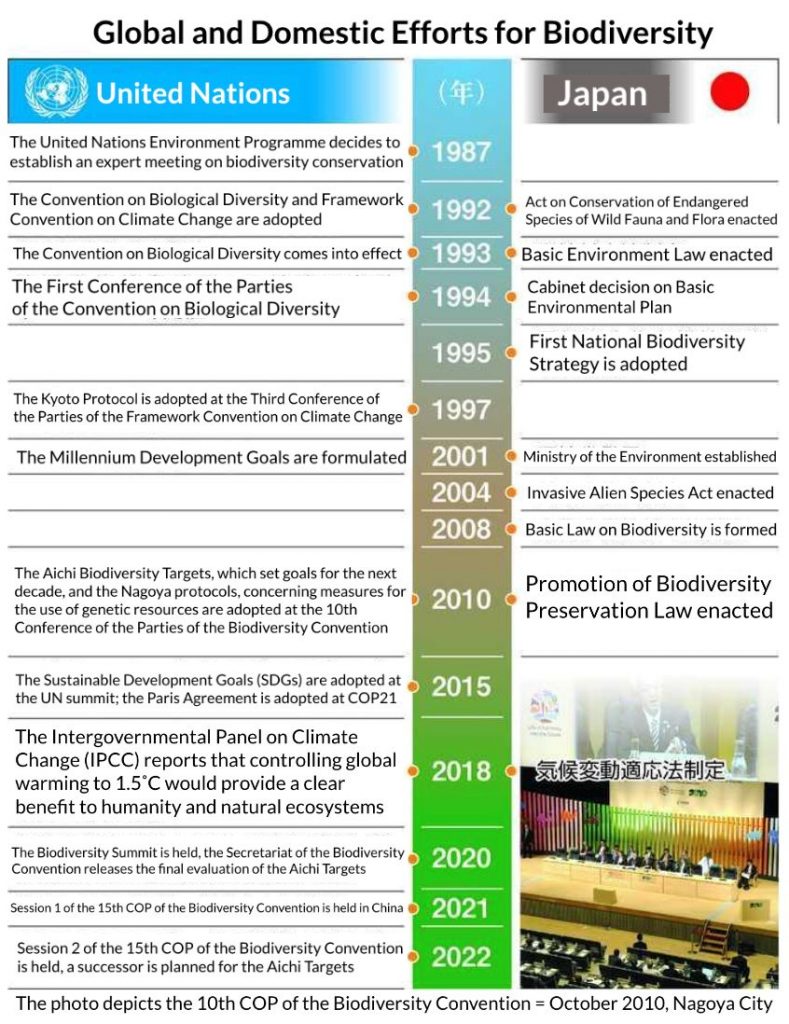
Have there been any successful strategies?
One example is the expansion of protected areas. In Japan, we have increased national parks and expanded marine protected areas offshore.
However, we haven’t advanced in eliminating the fundamental causes of the problems in the agricultural, forestry, and fishing industries, among others.
About Species, Genes, Ecosystems
Biodiversity refers to the rich individuality and connections between living organisms, and there are three parts to the definition by the Biodiversity Convention:
The most well-known is diversity among species. Living organisms include everything from plants and animals to microbes and fungi. Each comes to exist after a long evolutionary process that is part of the history of the Earth.
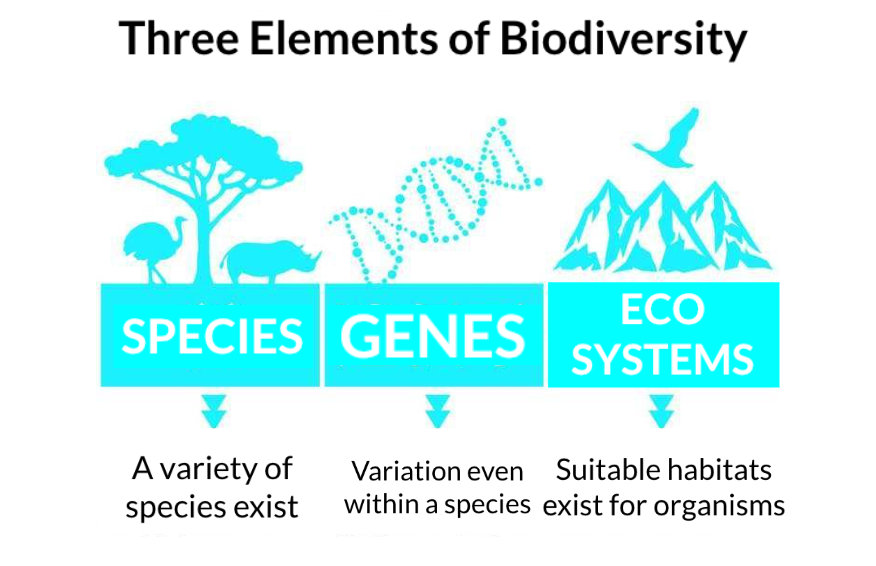
Another is genetic diversity. Even in the same species, there can be some differences in characteristics due to genes. In other words, they are very minute, and sometimes the changes can be very small, while other times they can vary greatly.
Furthermore, living organisms have connections between them. The environment and living things interact with each other and exist while maintaining relationships both individually and as a group.
In addition, each region has its own distinct ecosystem. Diversity in ecosystems is also an important part of both natural environments and human society.
About Kazuhiko Takeuchi
Dr Kazuhiko Takeuchi was born in Wakayama City in 1951. He obtained a Masters and PhD in Agriculture from the University of Tokyo Graduate School of Agriculture. After working as a professor at the University of Tokyo, he became director of the University of Tokyo Integrated Research System for Sustainability Science. He has served as Senior Vice-Rector of the United Nations University and Assistant Secretary-General of the United Nations.
He is currently president of the Institute for Global Environmental Strategies and Project Professor at the Institute for Future Initiatives, the University of Tokyo.
このページを 日本語 で読む






